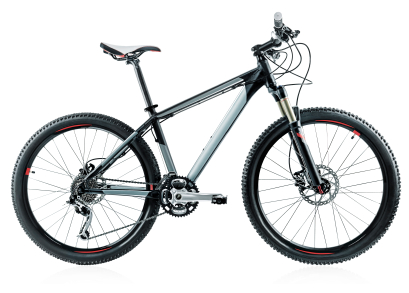 I love riding bikes. It’s true.
I love riding bikes. It’s true.
Having my own bike gave me the first true taste of independence as a child.
Countless miles have passed below my feet over the years, mostly as a kid, but continued up through my high school and college years.
If you’ve followed this blog in the past, you may have read this particular entry, where I describe the joy of discovering how to ride a bike (without training wheels, that is) on Christmas Day:
“We had this old bike from the ’50s with large balloon tires on it. It had been re-painted and passed down through all the kids. Kevin (my brother) would launch me down the sidewalk on this thing and I would invariably crash into a neighbor’s car, or my mom’s rose bushes. Neither was the preferred outcome.
But on this glorious Christmas Day, when it was about 70 degrees outside, I took my new Sting-Ray out to the street, kicked up the kickstand, climbed aboard, and gave the pedal a mighty push. I was off down the street like I had known how to ride all my life.
I rode up and down the street a few times, more than a little excited. I managed to get back to the house, ran inside and made my dad come out and watch, proof that I had finally managed the intricacies of bike riding.”
The truth is, I don’t know how to ride a bike. I just do. One day, I couldn’t keep my balance and would crash into things, and the next day, I could.
It’s always bothered me that I don’t understand the physics of bicycles. The analytical part of my brain has tried to find an obvious answer for how bikes work and how riders keep their balances. I haven’t found it, and apparently for good reason.
I ran across this article, “How Bikes Keep the Rubber on the Road“, and discovered that truly learned scientists don’t fully understand how bicycles work either. A team in The Netherlands has studied the factors that help keep a moving bike upright and have learned a few things:
“A conventional bicycle is remarkably stable when moving. Even without a rider, it can coast for long distances and catch itself from falling.” […]
“Bicycles, the team suggests, are more complicated than previously thought. While gyro and trail effects can contribute to stability, other factors such as the distribution of mass and the bike’s moment of inertia can play a role as well.”
I knew it! I knew there was more to bikes than can be casually observed. These scientists hope that their experiments will lead to new and improved bicycle designs that will augment these natural factors. It will be fun to see what they come up with.
OK, so we really don’t know why bikes work, but I guess I can retire my earlier fall-back hypothesis in lieu of these new scientific findings:
“It’s magic!”
ha! remember going down hills with the wind cooling the sweat on your face and then…letting go of the handlebars and being cooler than cool?
there ARE hills in your country?
I do remember that!
I also remember wiping out on my ten-speed and lying in the middle of the street for a bit after hitting my head. I may or may not have been out for a few seconds.
Might also explain a few other things …
As for the hills, you’re just gonna have to come find out for yourself.
skillz. i haz em.
I recall my daughter describes a similar experience. My father was teaching her to ride but she couldn’t get the hang of it. She had a dream that she was riding. The morning after the dream she got on the bike and she rode by herself without grandpa’s help.
That was about 30 years ago. A few years a go, we began riding bikes again. They converted a lot of old railway lines into bike paths and now there are miles of bike trails in the area. We enjoy the exercise, and most of the time we go through forest preserves and enjoy the scenery.